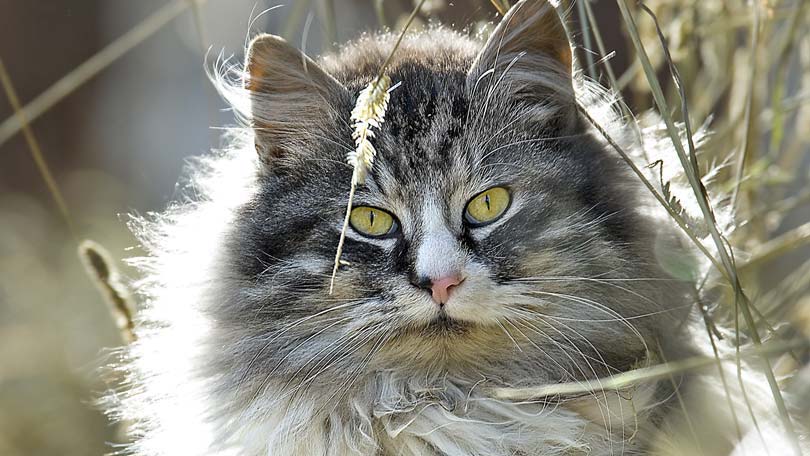
For most pet owners, hairballs and cats are a disgusting fact of life. The telltale retch, the unfortunate stinky mass in the middle of the carpet- we are familiar with many of the signs. Hairballs are not only a nuisance, but can be a serious health threat to your cat.
The feline affinity for grooming is also their downfall when it comes to hairballs. The tongue of the cat is a rough surface, covered with papillae that act as a “comb” when they lick their coat. This “comb” in the tongue catches dead hair, and unable to spit it out, cats swallow this hair. The hair is not digestible, and accumulates in the stomach and intestines. This accumulation continues to grow and combine with digestive acids, mucous and undigested pieces of food, eventually causing a blockage. Food and water will begin to have trouble passing through the hair, causing coughing and gagging episodes. In most cases, the retching will produce the hairball and solve the problem temporarily, until the cycle begins again.
The signs of hairballs can vary in severity depending on the cat and degree of blockage. Early signs can include a poor appetite, depression and lethargy. A dry cough and frequent retching, especially after meals, as well as small spots of yellow bile on the floor or carpet, are evidence of unsuccessful attempts to void the hairball. Constipation, or hard stools with visible hair, may be seen as the digestive system tries to deal with the amount of hair present. Finally, the hairball itself is a cylindrical, wet, sticky and stinky mass of hair and digesta.
The best way to treat hairballs in cats is by prevention. Brushing your cat is the single most effective way you can prevent their formation. Although hairballs present more of a reoccurring problem in long hair cats, both long and shorthair cats can develop them. Because of their affinity for grooming, most cats can become quite fond of regular brushing. A slicker brush acts similarly to the comb of the cats tongue, brushing and separating the hairs, and removing loose and dead hairs from the cat. With daily brushing, you will decrease the amount of dead hair available for your cat to digest, greatly reducing the accumulation of hairballs.
While brushing is an effective way to prevent hairballs, once present in your cat, there are several over the counter ways of getting rid of them.
Commercial hairball remedies frequently come in gel-form, and are fed to the cat for several days once signs of a hairball are present. These gels contain a lubricating ingredient to help encourage the passing of hairballs, as well as bulk to encourage the cat to pass the hairball in his feces. However, because most hairball remedies contain mineral oil, they should not be given on a routine basis, as mineral oil can deplete the body of natural vitamins.
There are several treats available in various forms that can help facilitate the removal of a hairball. Most of these also contain a lubricant, so it is important to read the ingredient list and dosage instructions carefully, to ensure the possible long-term use.
Many major pet food companies have a “hairball formula” cat food, which can be bought at most pet stores. These foods work on the premise of adding extra fiber to the diet to assist the passage of hair in the stools.
Some cat owners have found good success with home remedies or additives to their cats food to prevent and expel hairballs. A small amount of canned, non-flavored, pumpkin added to your cats food on a daily basis may provide much needed fiber and natural lubrication to help hairballs pass. The high fiber content of the pumpkin may also help with constipation and diarrhea problems related to hairballs. Most cats find the pumpkin additive palatable, and readily eat it in their food. In addition, bran, psyllium and slippery elm can each be useful in relieving hairballs in cats.
Hairballs in cats are usually an annoying, but with a strong prevention program, an easily manageable problem. Unfortunately, without treatment, hairballs can progress to a full obstruction of the stomach or intestines, a life threatening emergency situation that may require surgery. Cats who have been struggling to expel a hairball unsuccessfully for over two days, or those who fail to respond to over the counter treatments for hairballs, should be seen by a veterinarian. These are signs of more serious medical problems and need to be treated immediately.
Hairballs and cats go hand in hand. Thankfully, with a little preventative care from you, as well as ability to recognize and treat the early signs of a problem, you can prevent hairballs from becoming a serious, life-threatening issue for your cat.
